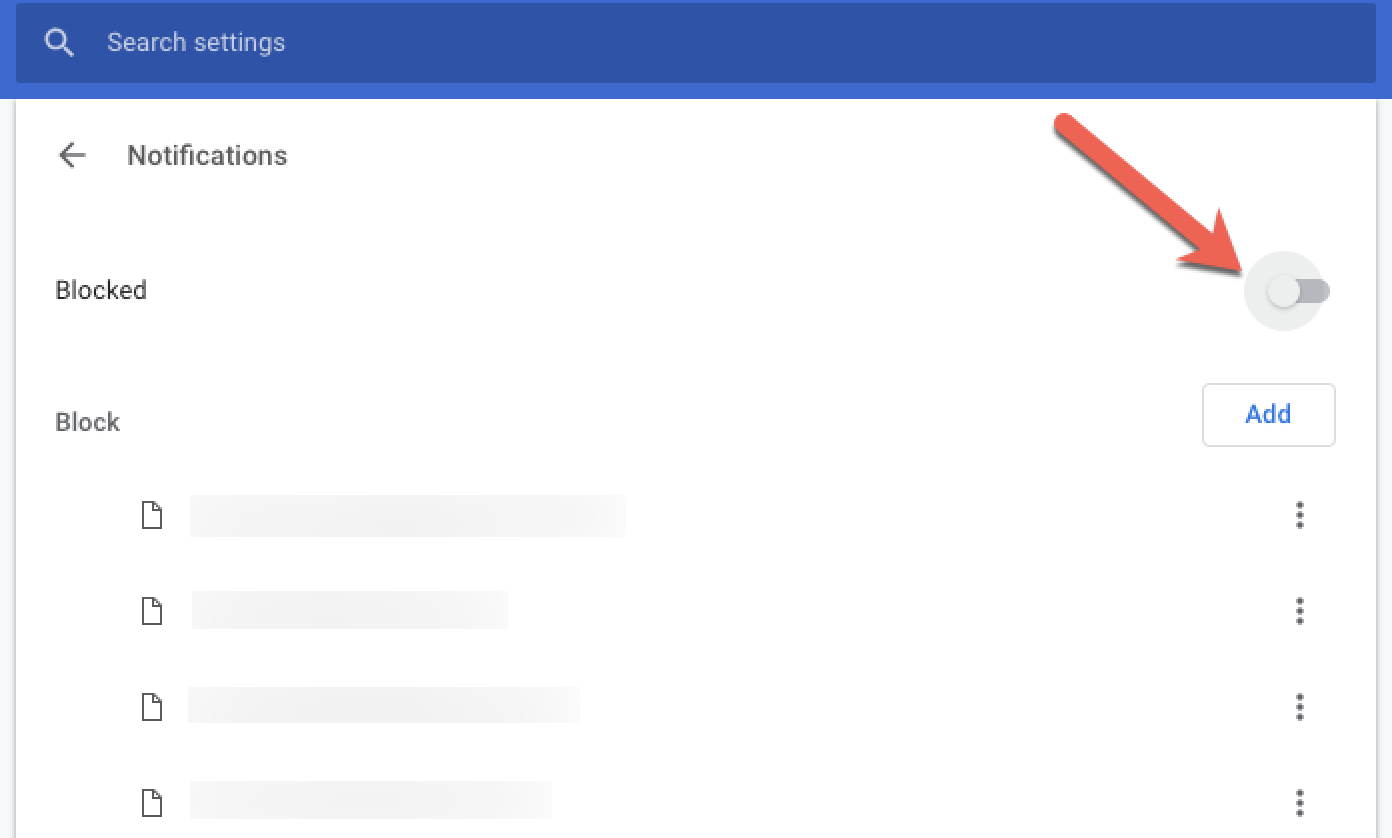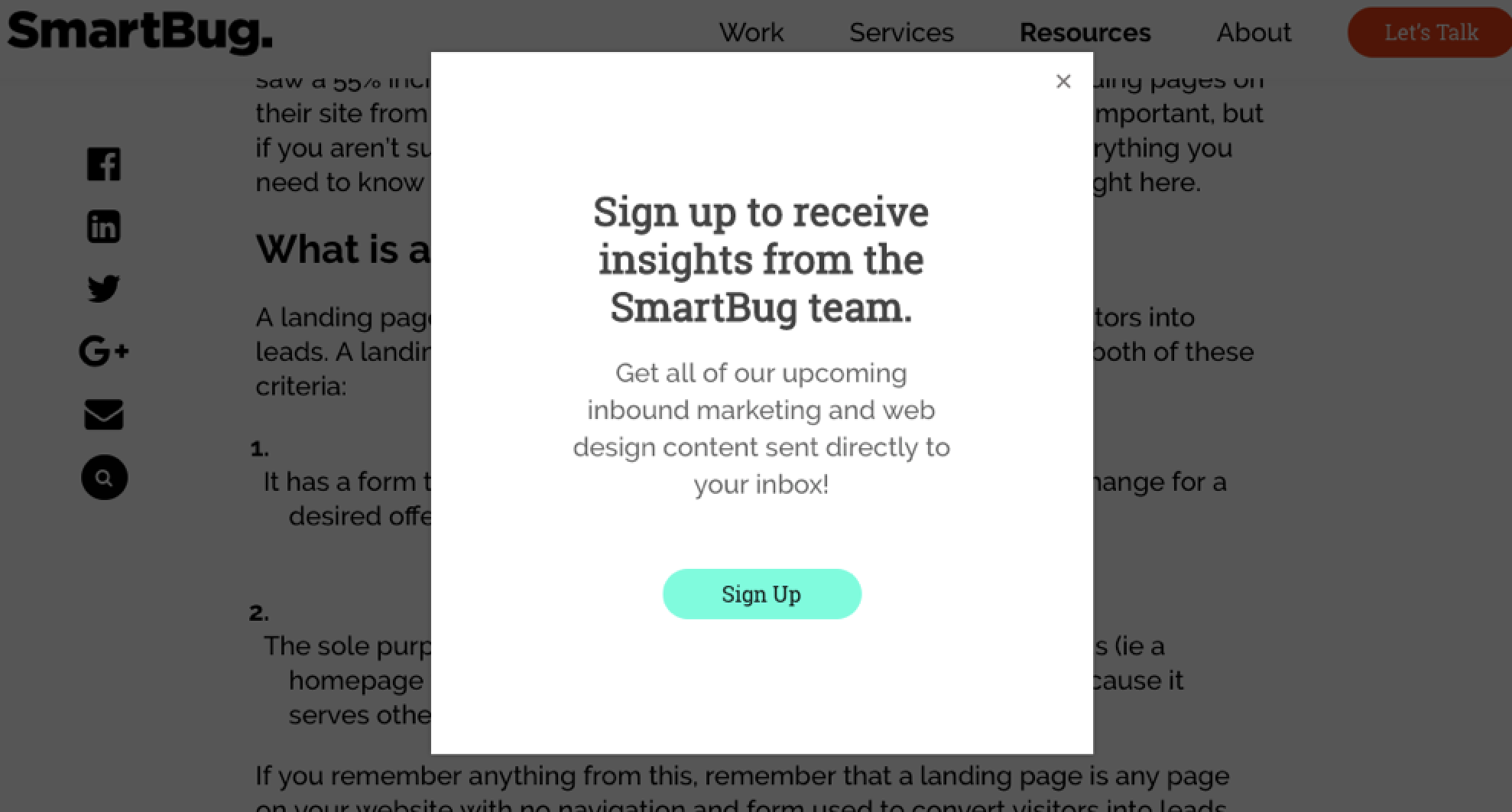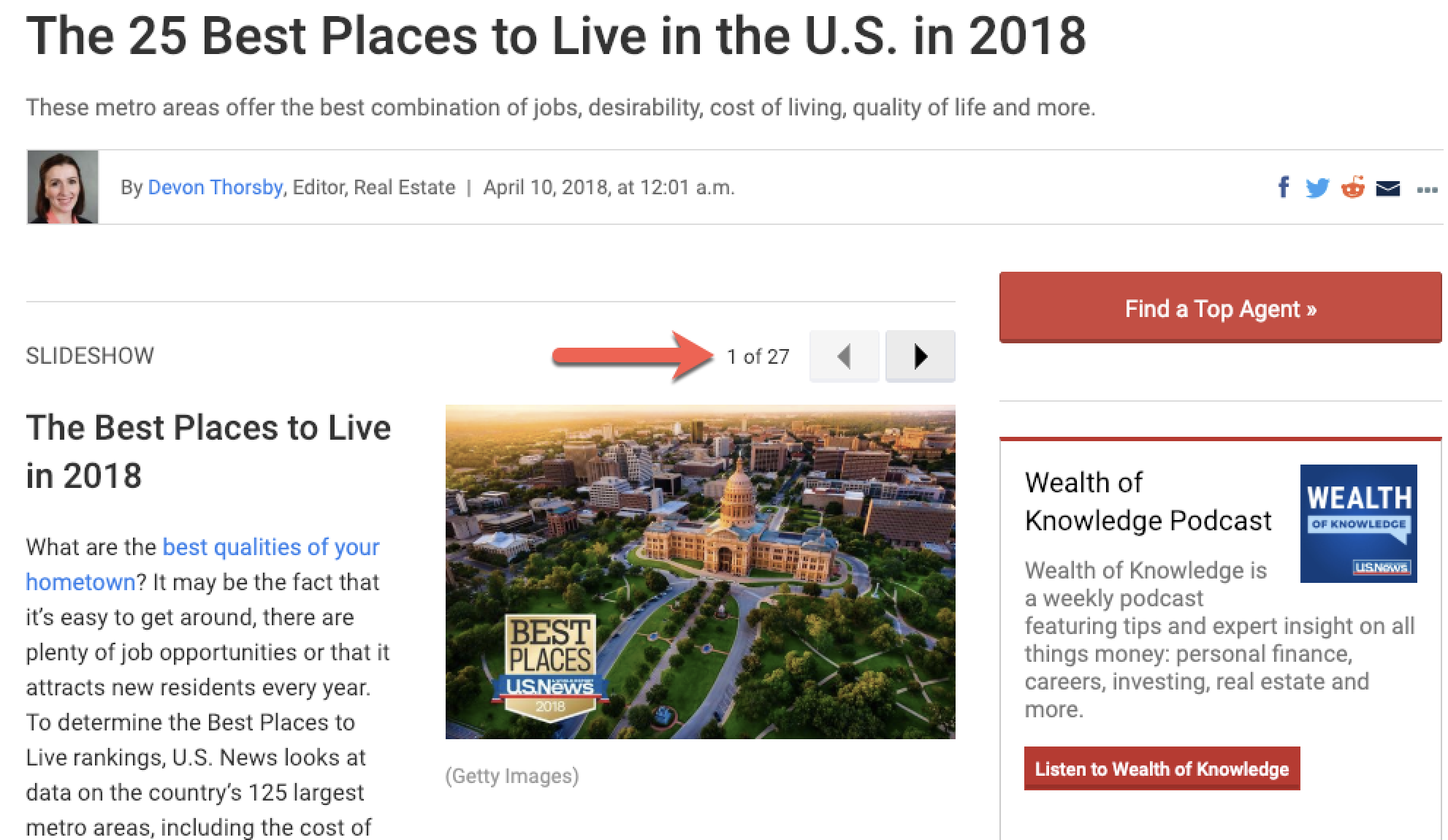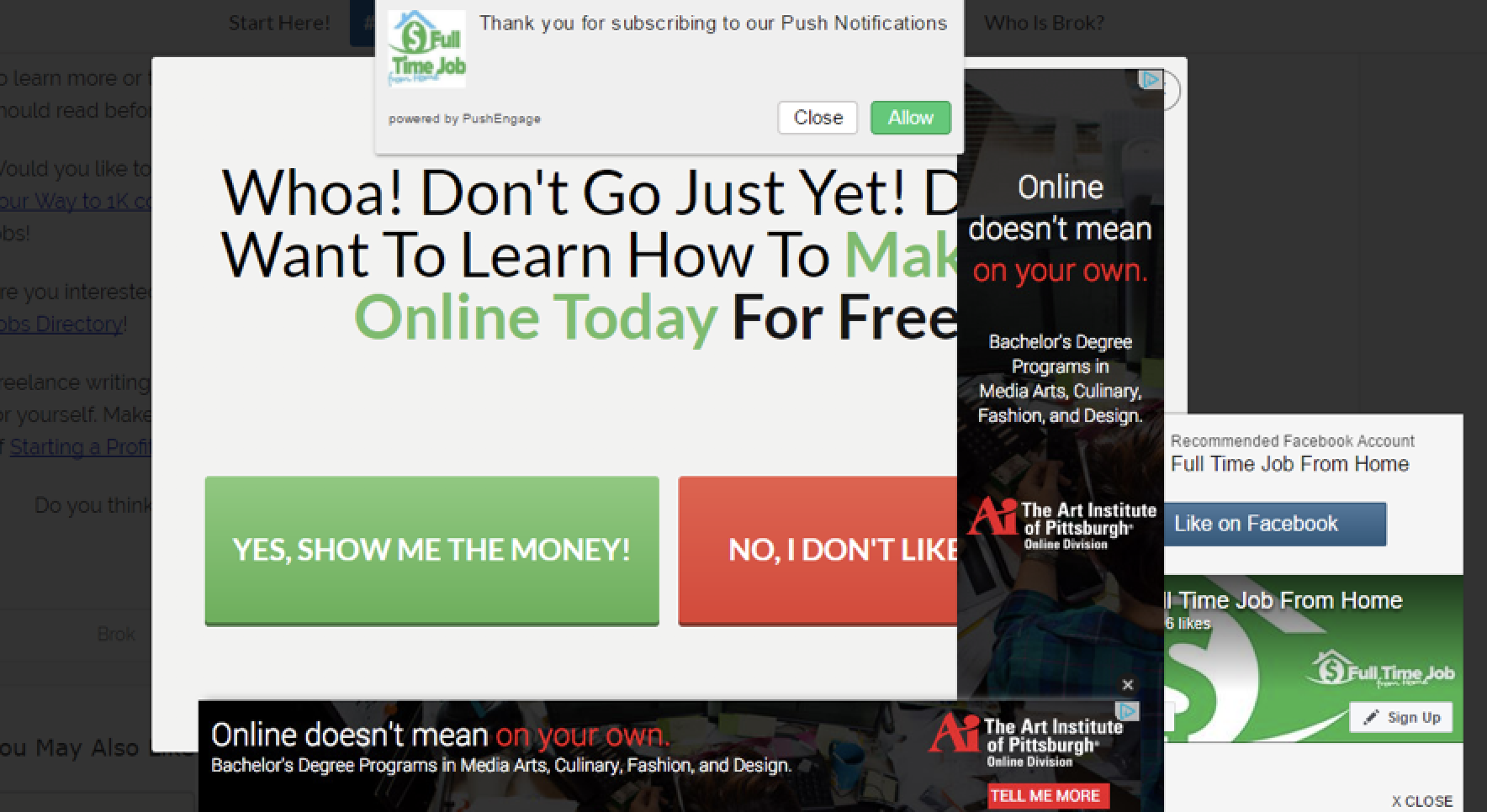Pop-ups, modals, overlays, interstitials: There are a lot of different ways to refer to the design elements that websites use to notify you of something (e.g., this site uses cookies) or encourage you to take an action (e.g., sign up for our newsletter). Regardless of what you call them, these notifications can be annoying, intrusive, and distracting.
But you don't have to deal with the process of closing multiple pop-up notifications to read content online. With the right extensions, you can block all website notifications on Chrome—and get rid of other annoying website elements like paginated articles and auto-playing videos—to start enjoying a less distracting online reading experience.
- How to Block Website Notification Requests
- How to Block Cookie Notifications
- How to Block Marketing Overlays
- How to Block Auto-Playing Videos
- How to "Unroll" Paginated Articles
- How to Block Ads
How to Block Website Notifications on Chrome
It's easy to justify real-time desktop or browser notifications for something like incoming emails or Slack messages. It's harder to justify getting them for new content on a website you just heard of for the first time because it showed up in the search results. However, that doesn't stop websites from asking you to let them send push notifications to your desktop or browser.

If you're tired of seeing these pop-ups and having to decline the requests, you can change your Chrome settings to either block all push notification requests or block them on specified sites.
- Open Chrome.
- Click the More icon (three vertical dots at the top-right corner of the browser).
- Select Settings.
- Scroll down the page, and expand the Advanced section.
- In the Privacy and security section, select Content settings.
- Select Notifications.
- Toggle the Ask before sending switch to the off position. (This will change the text to say Blocked.)

Then, if you want to allow notifications from certain sites or applications, scroll to the bottom of the page and add the URL of the site you want notifications from to the Allow section.
If you're already getting notifications you don't want from specific sites, click the more icon (three vertical dots) next to the offending site, and select Remove to stop getting notifications.
How to Block Cookie Notifications on Chrome

Since the European Union starting enforcing GDPR in mid-2018, nearly every website you visit now covers a part of the content you're trying to read with a notification about the use of cookies on the site.
If you're tired of clicking accept buttons and close icons to get cookie notifications out of the way of the content you're trying to consume, use the I don't care about cookies Chrome extension to banish them for good.
I don't care about cookies is a free (with donations accepted) Chrome extension that claims to remove cookie notifications from almost all websites. To find out how well it works, I tested it on 10 different websites, each using varying types of cookie notification displays:
- In website headers and footers
- As pop-ups/overlays
- With an accept button only
- With accept and decline buttons
- With a close icon only
It got rid of the cookie notifications on all 10 sites.
And if you do find a cookie notification that slips past the blocker, you can report it by clicking Report a cookie warning in the extension's options menu.
How to Block Marketing Overlays on Chrome

Marketing overlays usually pop up either shortly after you've opened a site and started to read the content, or when you've just finished reading something and started to move your cursor toward the omnibar. It appears above the content you were trying to read, grays out the background, and requires an action to get rid of it.
And to top it all off, marketing overlays often use snarky CTAs—like "I hate saving money"—on decline buttons or make the close icon nearly impossible to see.
There's no perfect solution for getting rid of all pop-ups and overlays, but the free Poper Blocker Chrome extension certainly makes a dent in the number of overlays you have to interact with while surfing the web.
I tested Poper Blocker on 10 sites with varying types of overlays:
- Those that appear on page load
- Those that appear when navigating away from the page
- Those that pop up in the corner of the screen while scrolling
Of the 10, Poper Blocker blocked seven, including one that previously prevented any further action on the page with a "You're using an ad blocker" warning.
Even though Poper Blocker wasn't perfect, it certainly helped, and it has another couple of features that make overlays less frustrating to deal with. If an overlay gets past the blocker and you can't figure out how to close it, right-click the overlay and select Remove Overlay to get rid of it. After doing so, you can select an option to Remove Always to block that overlay every time you visit that website.
How to Block Auto-Playing Videos on Chrome

Last night, you blasted your favorite song through your laptop's speakers. Today, you're sipping coffee and getting prepared for the day with a little online research. You were having a nice morning until you landed on a site with an auto-playing video that started playing at the volume of your evening jam session and scared the snot out of you.
Auto-playing videos—especially those that play audio and video—are the modern equivalent of websites with background music: unnecessary, unexpected, and generally unpleasant. And they slow down your page load speeds.
To stop auto-playing videos altogether, you can use the free AutoplayStopper Chrome extension.
I tested AutoplayStopper on 10 sites with auto-playing videos—including CNN, ESPN, and YouTube—and it prevented videos on every single site from playing both audio and video.
And if for some reason you do want to allow videos to autoplay on a specific site, you can whitelist sites quickly by opening the extension's options menu from the omnibar and selecting Allow autoplay for [site].
How to "Unroll" Paginated Articles on Chrome

You'd love to read that article about the 25 best places to live in the U.S.—if only every location weren't on a separate page of the site. Pagination turns an article that would otherwise have taken five minutes to read into a 15-minute exercise in patience while you wait for page after page to load.
Instead of doing all of that clicking and waiting, try using Evernote (free plan available) and Evernote's free Chrome extension to unroll paginated articles.
With Evernote's Web Clipper for Chrome, you can save any article you find on the internet to Evernote. Even if the article is paginated, Evernote unrolls it and displays it all on a single page.
Of course, you'll have to navigate to your Evernote app to read it, but it takes much less time to flip over to Evernote than it does to wait for 25 pages to load. And when you're finished, you can keep it in Evernote to reference later, or delete it if you don't think you'll need it again.
How to Block Ads on Chrome

Online ads aren't as much of a nuisance as they used to be. Generally, sites have stopped doing things like cramming ads into every open space on the page and using pop-ups and pop-unders. But even though things are better, you'll still occasionally run across a site like the one above that hasn't caught up to the new user experience best practices for advertising.
If ads are slowing down your browsing experience consistently, you can use an ad blocker to get rid of them altogether. I've been using the free AdBlocker Ultimate for the last year or so, and I'm completely happy with it. It blocks display ads, YouTube pre-roll ads, and even AdWords ads (the text ads that appear in Google's search results).
Prior to AdBlocker Ultimate, I used the free Adblock Plus. While it removed ads effectively, it often slowed Chrome down dramatically while I was browsing, so I ended up replacing it.
Other popular free ad-blockers for Chrome include uBlock Origin (known for its customizability) and Ghostery (blocks ads and trackers).
Ads, overlays, notification requests, unnecessary pagination, and auto-playing videos aren't quite everything annoying you might run into online. There are others things you'd probably like to be able to disable (hello, chatbots) that don't currently have solutions. However, these setting changes and extensions are a good starting point for enjoying a more pleasant and less distracting internet browsing experience.
source https://zapier.com/blog/block-notifications-chrome/

No comments:
Post a Comment